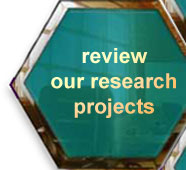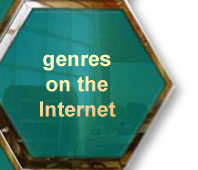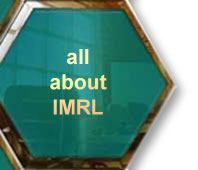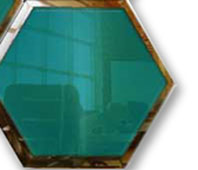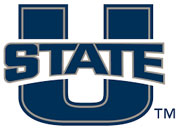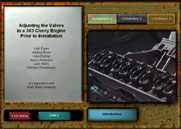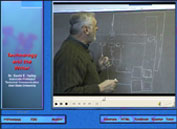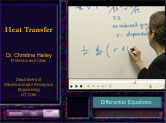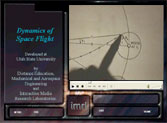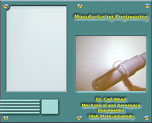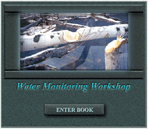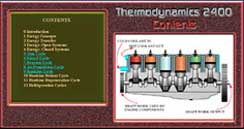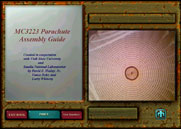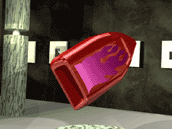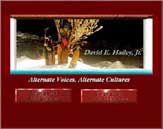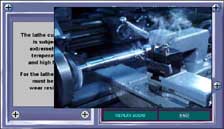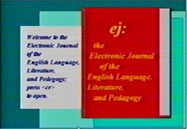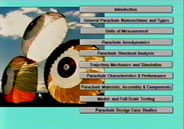Learning to use rich media is critical for any professional writer.
If you think about it, video, animation, charts and graphs, illustrations, and simulations are all ways we communicate. In that respect, they are all texts. That said, it is critical that you learn to use rich media in your writing. As a professional communicator, you will almost certainly be working on a website (among your other venues). Our research has been directed at identifying the various genres, including the rich media genres, that are used in the production of digital media.
We can't say it enough, "Learning to use rich media is critical for any professional writer."
Using EUPARS for Identifying, Evaluating,
and Cataloging Genres in New Media
We are using the EUPARS heuristic to make sense of the many new and different, digital genres
being used in Web and instructional design. More.
Developed Four Protocols for Preserving Complicated Processes in Danger of Being Lost.
Each process represents a different genre that permits recording critical skills and preserving
them for training, archiving, quality control, and evidence of effective training.
Produced more than 48 hours of instructional video describing Crow Indian historical battles.
Crow Elders told stories depicting a variety of battles against Sioux, and others, ending with the Battle of Little Big Horn. Done for USU, the NEH, and the Jackson Hole Historical Society Museum.
3-D Animation Instruction
This course is designed for commercial distribution. The total project
is approximately 120 GB and presents 3-D modeling, animation and game theory at theoretical, practical, and
professional levels. More.
Sales Instructional Design
Developed package to train sales people to market new Hitachi products.
Instructions on Restoration of GM "383"
This image is part of instruction on how to gap the valves in a stroked GM engine.
The project is designed for just-in-time learning.
Safety instruction Design
Worked with Rio Tinto to develop safety training packet.
Technology and the Writer Course and Book Combination
This project was created for distribution in Singapore. It contains all the lectures typical
of this course, but is designed to be used by a remote teacher.
Course/Book Much Like the One Above, Teaching Heat Transfer for Engineering Students
Using a master teacher to teach it, the class was designed to be taught remotely, with turors to
facilitate student learning.
Course/Book Dedicated to Graduate-Level Orbital Mechanics
After graduate students studied the material and worked assigned problems, they met with the teacher to work even more complicated problems.
Course/Book Dedicated to Manufacturing Engineering
This was the Introduction to Manufacturing Engineering, and worked as supporting material for a traditional
face-to-face class.
Introduction to Thermodynamics designed to be learned independently
Students who previously failed the course could retake it independently (taking proctored tests).
Environmental Protection Agency Project
This was digital support for a one-day water quality testing workshop given on the Turtle Mountain
Reservation.
MC3223 Parachute Assembly Guide Developed for Sandia National Labs
Capturing and preservingprofessional skills. The project consisted of 40 hours of high resolution,
interactive video broken into 5-30 minute segments. The videos contained step-by-step instructions.
DHTML-based, online Thermodynamics 2400
Online course, delivered to students on CD with access to the teacher available through the Internet.
MC3268 Parachute Assembly Guide
The second project, also funded by Sandia, fine tuned the techniques we learned producing the first one.
The projects were created in ToolBook and were served from a kiosk.
Virtual Reality Art Museum.
Produced and presented at the Gang of Five invitational art show in San Diego, this project included a
three room art museum with a collection of paintings, drawings, and sculptures.
Introduction to Thermodynamics Online Workbook.
Funded by the Utah Higher Education Technology Initiative and Utah State Universary, this project
provided workbook support for community college students planning to attend USU's MAE program.
Alternate Voices, Alternate Cultures (HTML hybrid).
This HTML revision of the above CD was combined with real-time, interactive, and televised lectures.
This HTML revision of the CD below, was combined with real-time, interactive, and televised lectures.
Developed in cooperation with USU's Department of Mechanical and Aerospace Engineering, this instructional
project includes 23 modules totaling approximately 1700 pages.
Developed online masters program in tech comm.
Funded by the Center for Independent and Distance Learning and developed with faculty from the department of English at Utah State University. The program has been recognized as one of the top 3 anywhere.
First Internet-based English course anywhere
In the winter 1995, we developed and taught our first completely online composition course using funding provided by the Higher Education Technologies Initiative. (No images of this project were ever recorded.)
Alternative Voices, Alternative Cultures.
Developed in cooperation with Utah State University's Instructional Technologies Department, US West, and the State of Texas, this is a complete, comparative, native American literature course.
Digital Slide Projector
Developed in Asymmetric ToolBook to present virtual slides of digital projects. . . One of the objectives of this "projector" was to explore the potential of an environment that used no alphanumeric text.
RS-650 Specifications HyperModule
Created to be delivered on CD-ROM disks, this project was and early hypermedia marketing tool that included video, sound, and primitive animations. It is worth pointing out that from this point, most of our presentation metaphors avoid the traditional page.
EJ: Electronic Journal of the English Language, Literature, and Pedagogy
Produced in ASCII and served through bulletin board technology, this journal explored the possibility of online hypertext before there was a World Wide Web. The project was abandoned in 1994 with the introduction of Mosaic NetScape.
AIAA Decelerator Design Guide
Developed in cooperation with the American Institute of Aeronautics and Astronautics and the Department of Energy. This project was the first of several designed to examine the possibility of instructing physical skills--1990-'93

